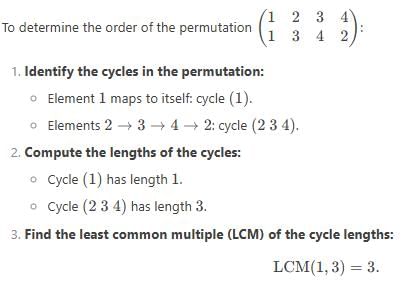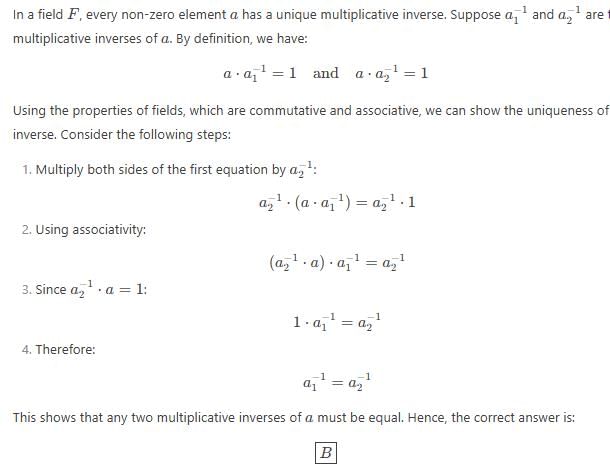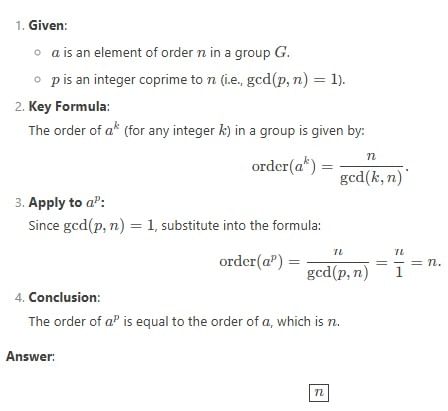-
Statement A:
- Claim: The identity of a subgroup is the same as that of the group.
- Verification: By definition, a subgroup H of a group G must share the same identity element e. This is required for closure under the group operation and inverses.
- Conclusion: Correct
-
Statement B:
- Claim: The inverse of any element in the subgroup is the same as its inverse in the group.
- Verification: In a subgroup H, for any h ∈ H, the inverse h⁻¹ must satisfy h · h⁻¹ = e. Since H inherits the group operation from G, the inverse in H is identical to the inverse in G.
- Conclusion: Correct
-
Statement C:
- Claim: The order of an element in the subgroup matches its order in the group.
- Verification: The order of an element h is the smallest positive integer n such that hⁿ = e. This property depends only on the element and the group operation, which are unchanged in the subgroup.
- Conclusion: Correct
-
Statement D (All of the above):
- Since A, B, and C are all valid, D is the correct choice
Test: Group Theory - 4 - Mathematics MCQ
20 Questions MCQ Test - Test: Group Theory - 4
If H is a subgroup of finite group G and order of H and G are respectively, m and n, then
Set of rational number of the form m/2n (.m, n integers) is a group under
A necessary and sufficient condition for a non-empty subset H o f a finite group G to be a subgroup is that
If n is the order of element a of group G, then am = e, an identity element if
If H, K are two subgroups of a group G, then H K is a subgroup of G, iff
The set M of square matrices ( of same order) with respect to matrix multiplication is
In the group G={0,1,2,3,4,5} under addition modulo 6, (2+3−1+4)−1=
Every finite group G is isomorphic to a permutation group; this statement is
The number of elements of S5 (the symmetric group on 5 letters) which are their own inverses equals
If a, b ∈ G, a group of order m, then order of ab and ba are
The set of all non-singular square matrices of same order with respect to matrix multiplication is
Two permutation f and g of degree n are said to be equal, if we have
If  and
and  are two multiplicative inverse of non-zero elements a ∈ F, a field, than
are two multiplicative inverse of non-zero elements a ∈ F, a field, than
If G is a finite group of order n, a ∈ G and order of a is m 7M, if G is cylic, then
If a is an element of order n of group G and p is prime to n, then order of ap is



 a ∈ G
a ∈ G
 is
is













